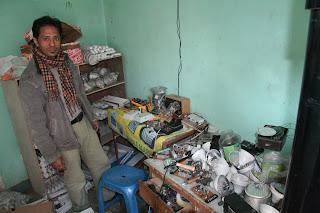1) Go to the post office with a form declaring you have a package
2) Go to the main desk and get told to go to room 32 (rooms 1-30 don’t exist)
3) Walk up to the crowded desk in room 32 and get told a copy of your passport is needed (I don’t have one).
4) Go outside to a copy machine shop to find the electricity is out so the machine doesn’t work
5) Find a working machine. Make a copy.
6) Go back to the first desk in room 32 and get told to take the paper work to room 31.
7) Go to room 31 and pay money for a form. Fill out the form.
8) Go back to room 32 with the form and passport copy to have the package opened, searched, have something scribbled on a form, and be told to go back to room 31 (without the package).
9) In room 31 go to a different desk and pay a customs fee.
10) Still in room 31, go back to the original desk to have a form stamped.
11) Feel relieved when you see Nepalis rolling their eyes at the process.
12) Wait for the workers to find the misplaced stamp. They don’t find the stamp. Get waved in the general direction of room 32. Remain confused as to how this all works if you don’t get any stamps or signatures.
13) Go back to room 32 to present the ‘finished’ paperwork.
14) Receive package.
15) Vent frustration by eating delicious homemade brownies.
16) Thanks, Mom!
17) On the way to lunch have your credit card eaten by an ATM.
18) Happy New Years!












